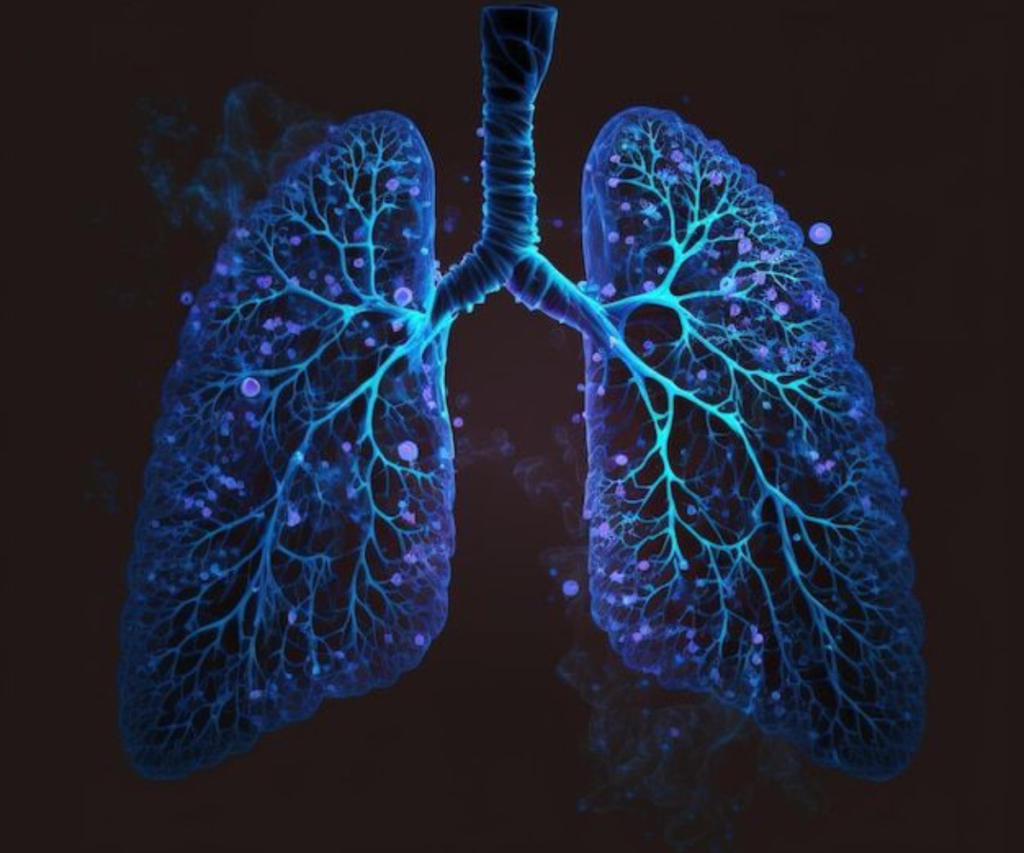Introduction
Early-detection-interstitial-lung-disease is a rapidly evolving area of research focused on identifying individuals at risk before symptoms appear. By using blood biomarkers, imaging techniques, and molecular profiling, scientists aim to detect interstitial lung disease (ILD) early, improve patient outcomes, and develop strategies for prevention and treatment.

Understanding Interstitial Lung Disease
ILD is not a single disease but a family of chronic lung disorders that share the hallmark features of lung inflammation and fibrosis (scarring). These disorders can arise from environmental exposures, autoimmune conditions, infections, or in many cases, unknown causes.
Types of ILD
- Idiopathic Pulmonary Fibrosis (IPF): The most common form of ILD, characterized by progressive lung scarring with no known cause.
- Connective Tissue Disease-Associated ILD: Often linked to autoimmune conditions such as rheumatoid arthritis or scleroderma.
- Hypersensitivity Pneumonitis: Triggered by prolonged exposure to inhaled environmental antigens.
- Occupational Lung Disease: Caused by long-term exposure to hazardous dust, chemicals, or fumes.
Symptoms of ILD
Early detection of ILD is difficult because symptoms can be mild or nonspecific. Common signs include:
- Persistent dry cough
- Shortness of breath during exertion
- Fatigue and general weakness
- Chest discomfort or tightness
Because these symptoms overlap with other lung conditions, ILD is often diagnosed at a stage when significant lung damage has already occurred.
The Role of Biomarkers in ILD

Recent scientific research has shown that certain biological indicators, or biomarkers, detectable in blood, can help identify individuals at risk for ILD. Biomarkers are molecules that reflect underlying physiological or pathological processes.
Predictive Potential of Biomarkers
Biomarkers can provide crucial information about disease progression and patient prognosis. Researchers have discovered specific proteins in plasma that correlate with both the likelihood of developing ILD and the survival outcomes of those already diagnosed. By monitoring these biomarkers, it may be possible to:https://www.youtube.com/watch?v=aqJeaD6IPMM
- Identify patients before clinical symptoms appear
- Distinguish early-stage ILD from advanced disease
- Predict response to therapy and long-term outcomes
How Biomarkers Complement Existing Tools
Traditionally, ILD diagnosis relies on imaging studies like high-resolution CT scans, pulmonary function tests, and lung biopsies. Biomarkers can complement these approaches by offering a less invasive, more accessible method for identifying high-risk individuals and tailoring personalized treatment plans.early-detection-interstitial-lung-disease
Advancing ILD Research: Mapping Molecular Hallmarks

Understanding the molecular mechanisms underlying ILD is crucial for developing targeted therapies. By analyzing gene expression patterns, protein levels, and cellular pathways in lung tissue and blood, scientists are building a comprehensive map of the disease. This approach helps to:
- Identify early markers of lung injury
- Understand why some patients progress faster than others
- Discover therapeutic targets to slow or prevent fibrosis
Challenges in Treating ILD
Current treatment options for ILD, particularly IPF, are limited and often associated with side effects. Drugs approved to slow disease progression may affect liver function or cause gastrointestinal symptoms, making adherence challenging for patients. Additionally, because ILD often presents at an advanced stage, treatment options are largely palliative rather than curative.
The urgent need for safer, more effective therapies has driven research toward early detection and prevention strategies. By identifying individuals at risk before irreversible lung damage occurs, new interventions can be tested to halt disease progression.early-detection-interstitial-lung-disease
The Future of ILD Prevention
Emerging research aims to shift the focus from treating established ILD to preventing its onset. Preventive strategies could involve:
- Risk Stratification: Using biomarkers and genetic profiling to identify high-risk adults.
- Lifestyle Interventions: Reducing exposure to environmental toxins, pollutants, and smoking.
- Targeted Therapies: Developing drugs that inhibit fibrosis pathways or modulate inflammation.
- Clinical Trials for At-Risk Populations: Enrolling high-risk individuals in preventive treatment studies to assess efficacy and safety.
By combining biomarkers, genomics, and advanced imaging, scientists hope to establish a predictive model that guides early intervention, ultimately reducing the burden of ILD on patients and healthcare systems.
Clinical Implications of Biomarker Research
Accurate prediction of ILD development could transform patient care in several ways:
- Personalized Treatment Plans: Physicians could initiate therapy before irreversible lung damage occurs.
- Improved Survival Rates: Early intervention may reduce morbidity and mortality associated with ILD.
- Enhanced Drug Development: Identifying at-risk populations enables more effective clinical trials for preventive therapies.
- Resource Allocation: Healthcare providers can prioritize monitoring and treatment for individuals most likely to develop severe disease.
Expanding Research Horizons
Current studies have focused on identifying blood-based biomarkers that signal ILD risk. Future research directions include:
- Multi-omics approaches integrating genomics, proteomics, and metabolomics
- Longitudinal studies tracking high-risk individuals over time
- Collaborative efforts combining data from diverse populations to ensure findings are broadly applicable
- Investigation of environmental and lifestyle factors that interact with genetic predisposition
Conclusion
Interstitial Lung Disease remains a complex and challenging group of disorders with significant health impacts. However, advances in biomarker research are paving the way for early detection, better understanding, and potentially preventive interventions. By identifying adults at risk and understanding the molecular underpinnings of the disease, medical science is moving closer to transforming ILD care from reactive to proactive.early-detection-interstitial-lung-disease

The ultimate goal is a future where ILD can be detected before symptoms appear, treated with safer and more effective therapies, and possibly prevented altogether, reducing the need for lung transplants and improving quality of life for countless patients.




